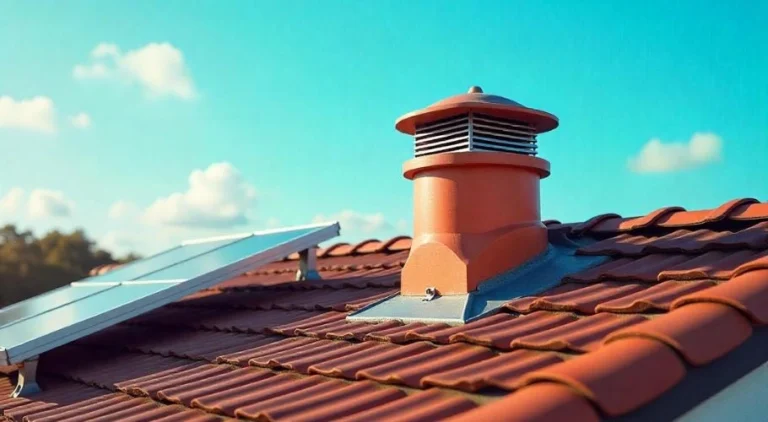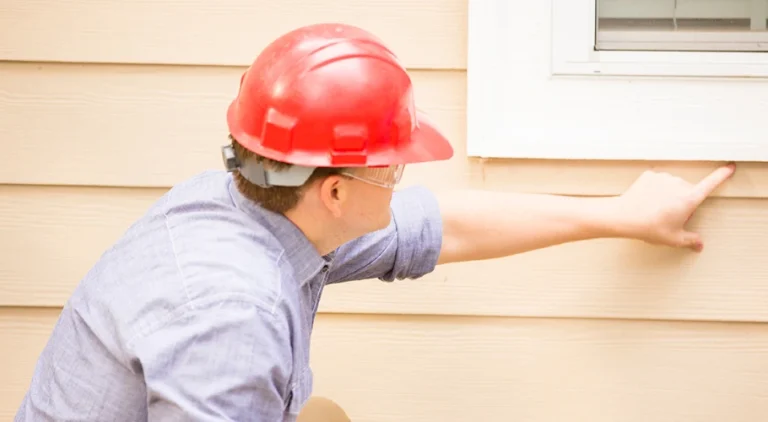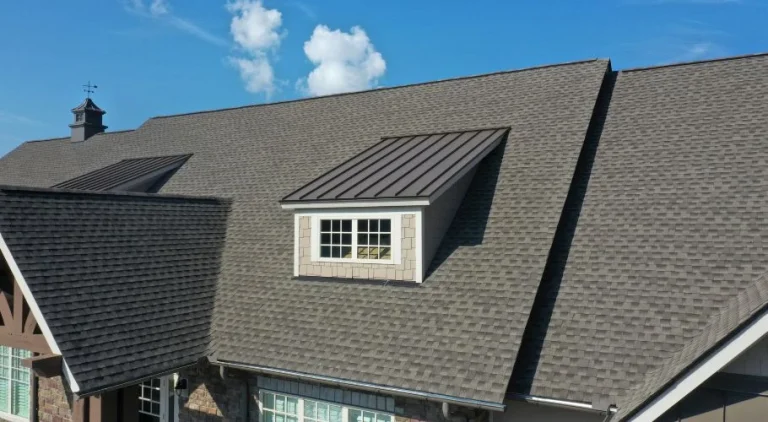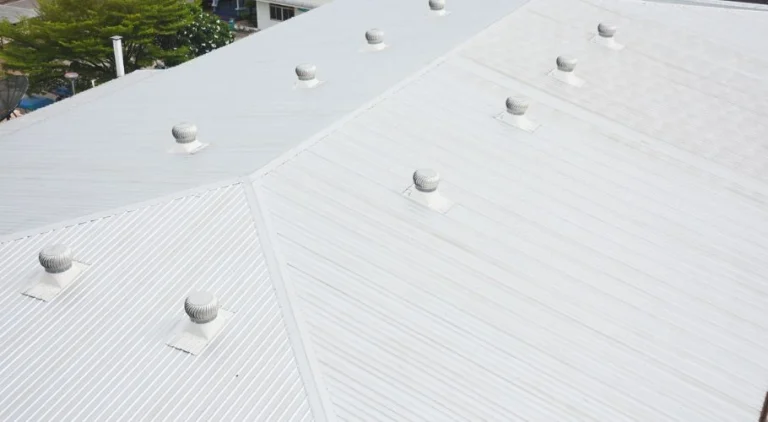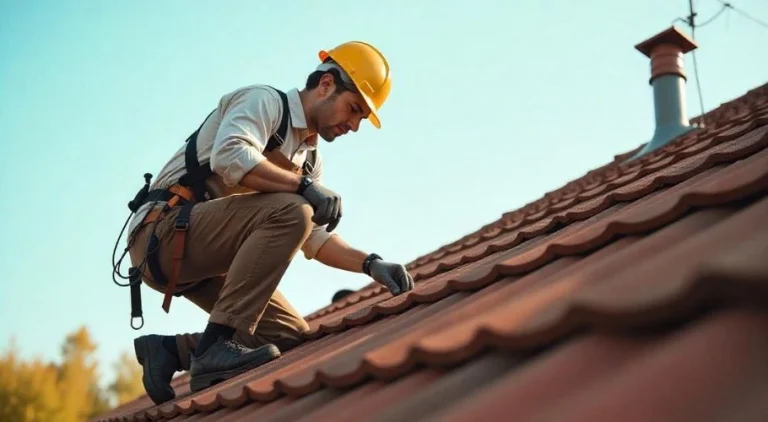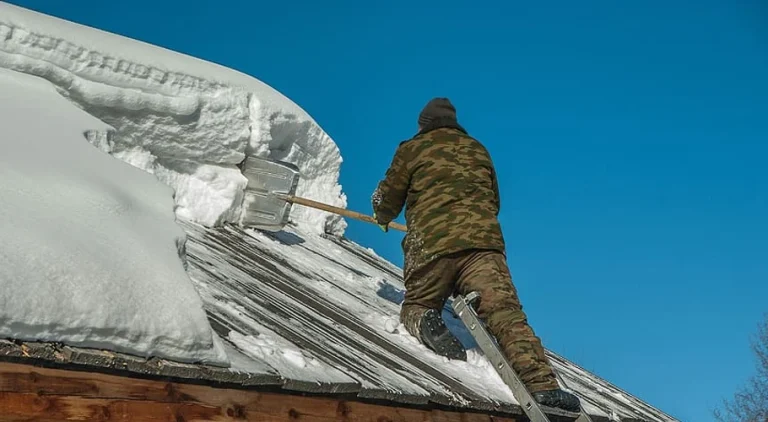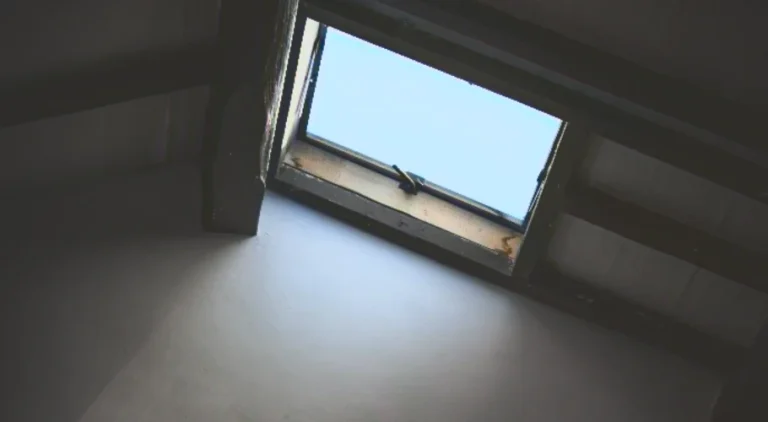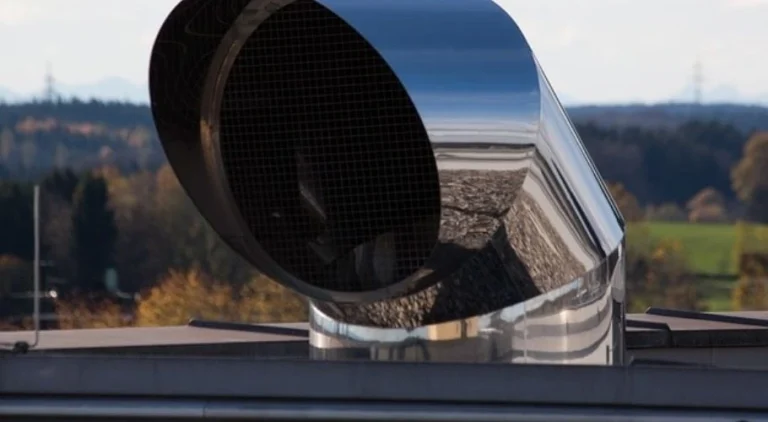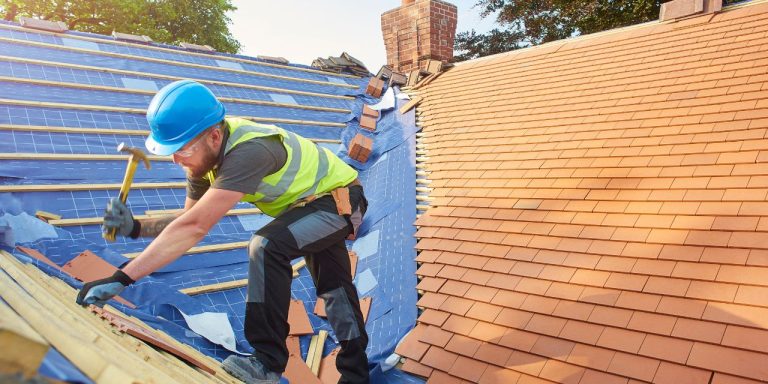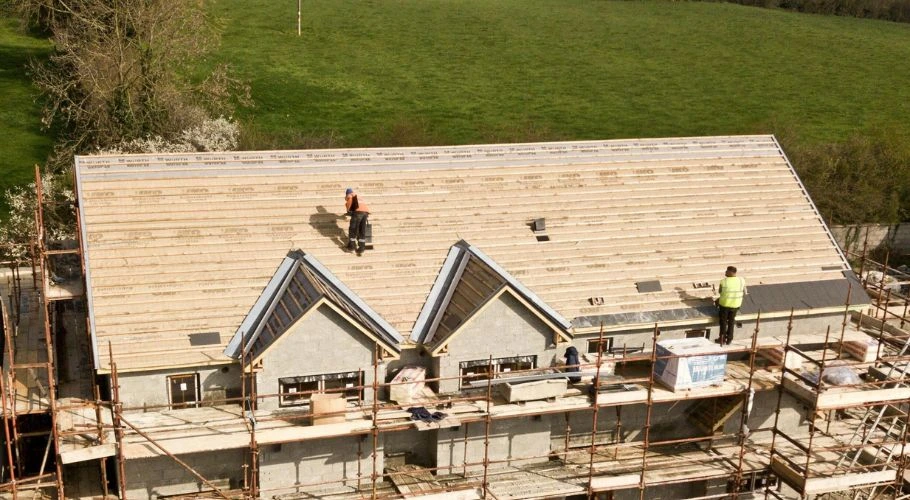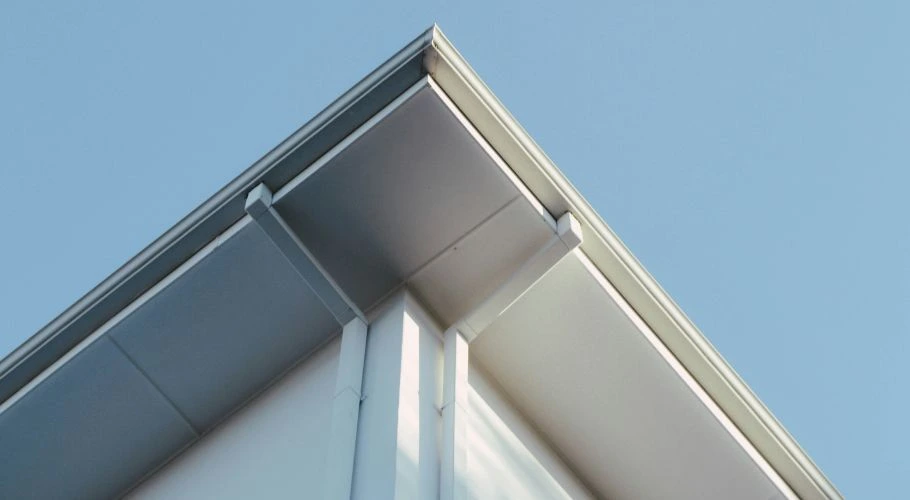
At Robbins Roofing, we always emphasize the role of downspouts in preventing roof leaks. Contrary to what people might think, those vertical pipes attached to your gutter systems and exterior walls actually do more than do more than provide efficient drainage.
Through the years, we’ve seen many cases of water-related damage that started because downspouts weren’t doing what they were supposed to. So, we put together the important role downspouts play in preventing roof leaks, what can go wrong, and what to do in case any issues arise.
What Is the Purpose of Downspouts?
The role of gutters and downspouts is to collect and direct water away from your roof and foundation. Their primary function is to keep rainwater from directly spilling off the edge of the roof, which can cause soil erosion, water damage, and roof leaks.
What Happens if You Don’t Have a Downspout?
A property with no downspouts means water ends up going wherever it wants. It overflows the gutters, soaks the roof’s edges, and runs down your exterior walls and siding. That creates the perfect conditions for rot, leaks, mold, and even structural damage. As time passes, this can lead to further deterioration and even work its way into your basement or crawlspace.
How Downspouts Protect Your Roof
1. Downspouts Keep Water Moving Off the Roofline
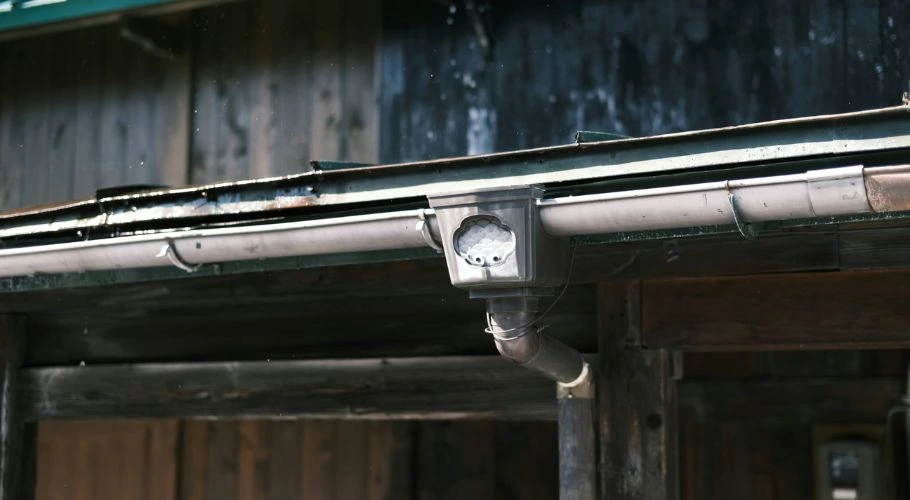
Your roof sheds water, and the gutters catch it. But it’s the downspouts that actually carry the water away from your home. Without a working downspout, you’ll end up with water pooling in the gutters and eventually spilling over the edges. Or worse—water backing up under the shingles.
If downspouts are too small, clogged, or missing altogether, water doesn’t drain fast enough. This means there’s water accumulation in the gutters, and this soaks the roof edges. Eventually, this water can find its way under the shingles or behind the fascia. This is when leaks start showing up inside your home.
2. Properly-Placed Downspouts Serve to Protect Roof Valleys
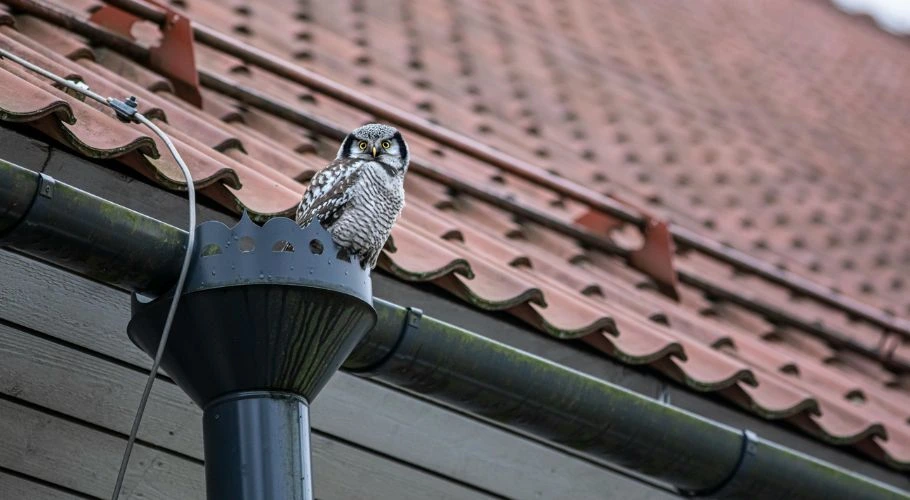
Roof valleys (the places where two roof sections meet) already handle a lot of runoff. If your downspouts drain onto the roof instead of into the lower gutters, it can overload those valleys during heavy rainfall.
That added volume puts more pressure on the shingles, flashing, and underlayment in that area. As time passes, this leads to premature wear, especially in composite shingle roofs commonly used around OKC and Edmond. Water starts to enter, and the next thing you know, your attic’s damp, and your ceiling has a yellow stain.
Redirecting upper-story downspouts into lower gutters, or away from the roof entirely, makes a big difference as it takes the pressure off the most vulnerable spots on your roof.
3. Downspouts Prevent Water From Pooling Around the Foundation (Which Can Lead to Roof Damage, Too)
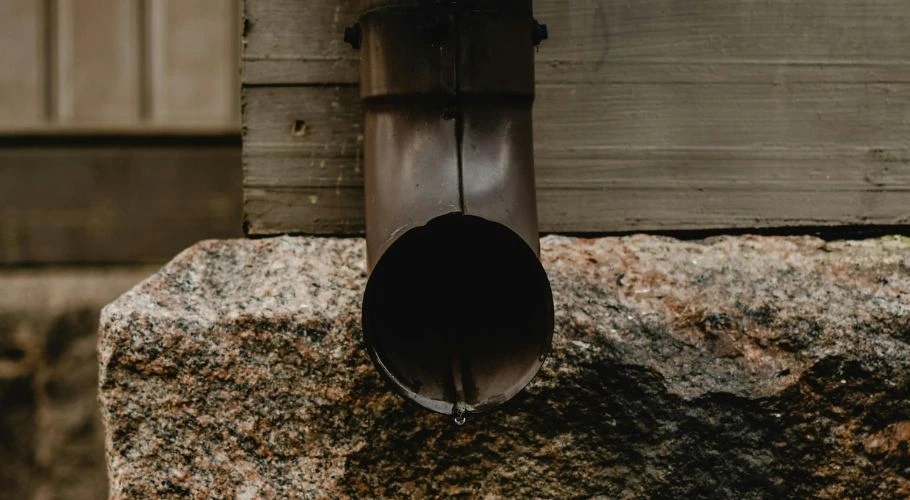
It’s not just the roof you need to think about. If your downspouts are dumping water right next to your house, all that moisture seeps into the soil and collects around your foundation. This can cause shifting or settling, especially in Oklahoma’s clay-rich soil that swells and shrinks with moisture. If your basement isn’t properly sealed and water-proofed, basement flooding is also possible during extreme weather.
How does this tie back to your roof? As the foundation settles unevenly, the framing of your property shifts. This puts stress on the roof structure, which can then lead to gaps, cracks, and shifting in the roof decking. As a result, leaks start creeping in. And this is all from a downspout that’s just a few feet too short.
Fixing it is simple: use downspout extensions for proper water flow. It can then channel rainwater at least 4-6 feet away from the foundation of your home.
4. A Good Downspout Setup Helps Avoid Ice Dams in Winter
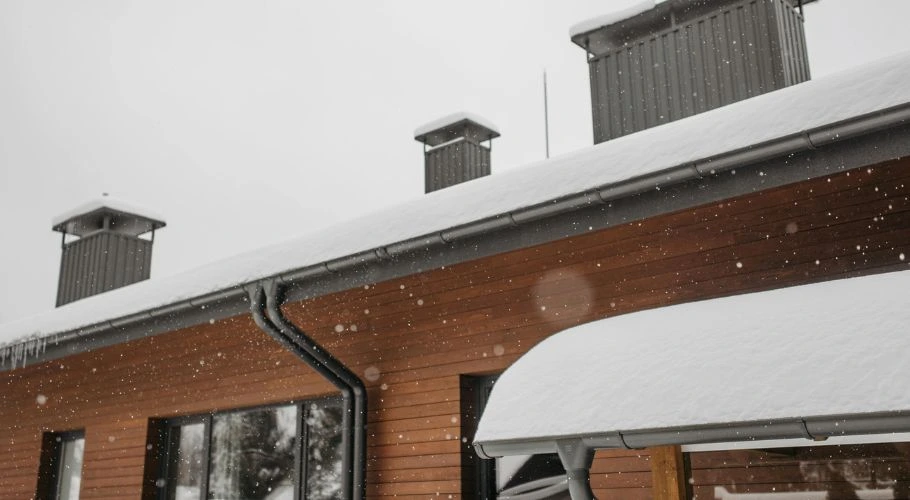
In colder climates, ice dams are common. If water backs up in clogged gutters or slow-draining downspouts and then freezes, it creates a solid dam at the roof’s edge. Snow behind the dam melts from attic heat, and that meltwater has nowhere to go. The next thing you know, you’ve got leaks, wood rot, mold growth, water damage, and even structural damage in some cases.
For ice dam prevention, make sure you do regular maintenance, ensuring proper drainage. This also helps prevent melting snow from turning into ice dams in the first place. More specifically, well-sloped and well-maintained gutters and downspouts redirect rainwater properly, keeping water moving so it doesn’t freeze and cause water damage.
What to Do if You’re Having Downspout Problems
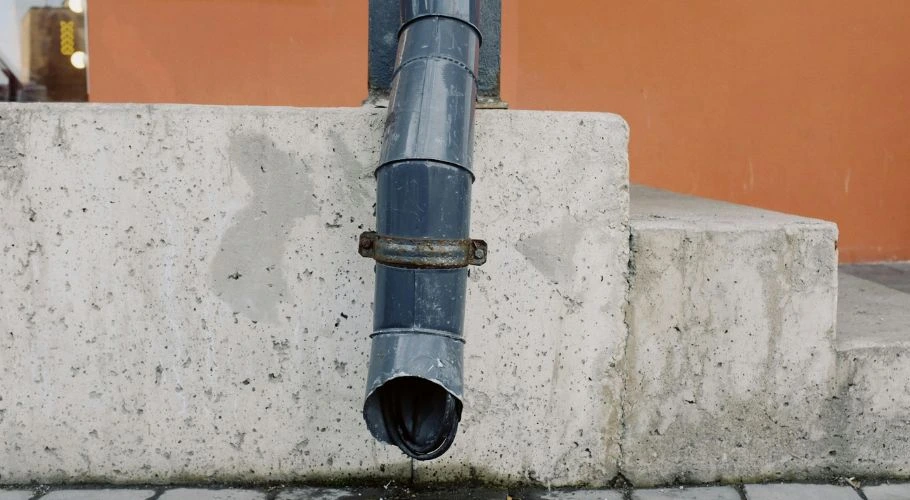
Let’s say you notice a water overflow in your gutters, water pooling in your foundation, or water stains on your ceiling after a storm. Your downspouts could be part of the problem. It’s best to identify and address any issue right away to prevent significant damage and protect your property’s structural stability.
Start troubleshooting by:
Clearing out your downspouts to prevent debris buildup. Use a hose or a plumber’s snake to flush the downspouts. You’d be surprised how often the issue is caused by a simple clog.
Inspecting connections. Make sure elbows and joints are sealed and secured. A loose elbow can throw water right into your siding or roof edge.
Checking for dents or crushed sections, because these block water flow and create backups.
Looking at the slope and discharge point. It should be directing rainwater away from the house, not sitting still or draining onto the roof.
Preventative Measures
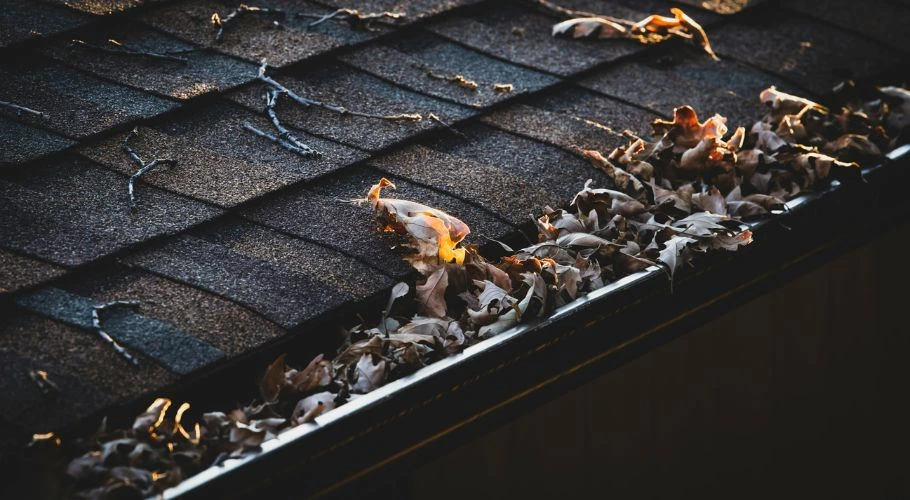
If you want to avoid costly repairs and protect your roofing materials, regular cleaning and downspout and gutter maintenance go a long way. Keep your gutters and downspouts clean, especially during the spring and fall. Inspect them after big storms and look out for signs like overflowing gutters, damp siding, or soil erosion near your home’s foundation. If you live in a heavily wooded area, you can install gutter guards for roof leak prevention and to lessen the possibility of clogs.
Additionally, make sure your downspouts have a slight slope to them, which helps them direct water more easily. Trimming overhanging branches also makes your gutters and downspouts less likely to clog, so we recommend doing it regularly.
Frequently Asked Questions (FAQs)
Yes, leaves that build up in your gutters block the flow of water. As a result, water overflows and soaks the eaves. The results are wet insulation, rotten fascia, and leaks in the attic or ceiling. That’s why it’s important to regularly inspect your gutters and downspouts to prevent erosion, leaks, and other water-related damage.
Downspouts should drain at least 4-6 feet away from your foundation, ideally into a sloped area that lets water flow away from the house. In some neighborhoods, they may tie into underground drainage that leads to the street or a dry well.
Yes, they can. If a downspout is cracked, crushed, misaligned, or disconnected, water may not drain properly. That means water overflows near your roofline, which eventually damages shingles, fascia boards, or the roof deck itself.
Some basic fixes like clearing clogs or adding an extension can be handled by most homeowners. But if your gutters and downspouts are pulling away from the house, the slope is wrong, or water is backing up into the attic, it’s best to contact professionals to handle it for you.
Call Robbins Roofing for the Best Home Improvement Services in OKC
Our team assists with more than just roofing. We’ve been helping homeowners take better care of their homes for years, handling roof replacement, repairs, and home improvement services in Oklahoma City. Ultimately, our goal is to help with roof protection and make sure your roof’s structural integrity stays intact through high-quality services.
If you think your downspouts or any other section of your roof might have issues, contact Robbins Roofing today for a free estimate!

